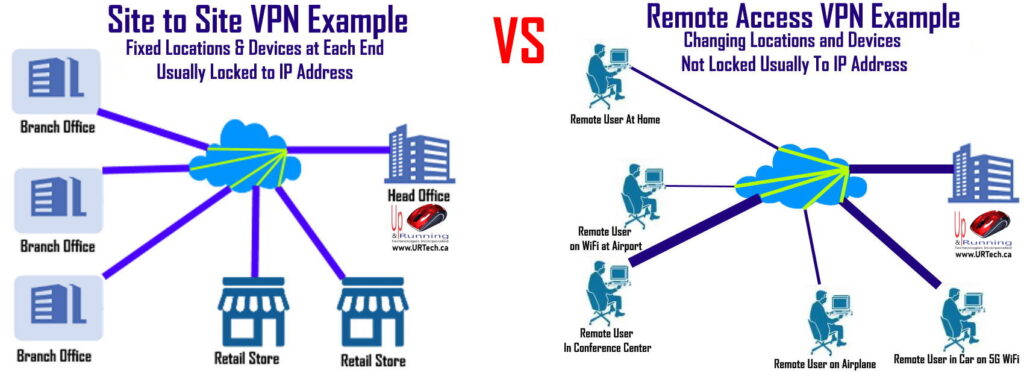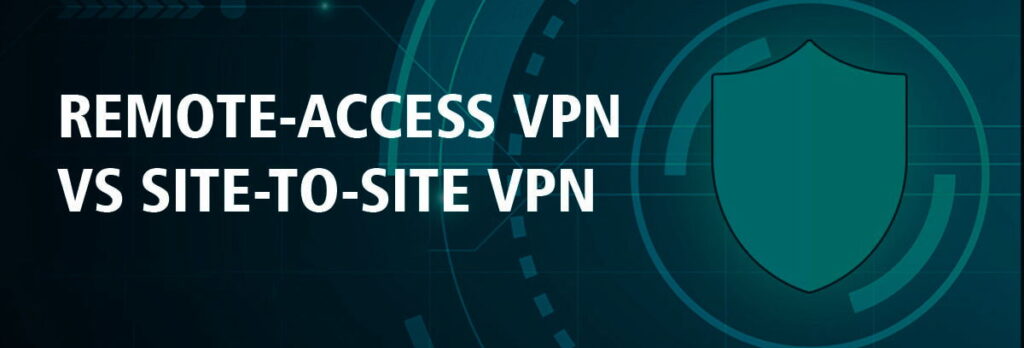Are you trying to figure out what is the best type of Virtual Private Network (VPN) for your company? We know that there are a lot of choices out there, so it’s tough to decide. The two most common types seem to be site-to-site VPN and remote access VPN due to the remote access abilities they provide.
In this article, we’re going to break down each of these VPN types, and explain their benefits and potential use cases. We hope that you’ll know exactly which type of VPN solution you’ll choose for your company based on your business and security needs. Let’s dive in and learn all about them.
What is a Site-to-site VPN?
A site-to-site VPN is a VPN solution that connects remote branch offices or remote employees to the company’s main network. The main reason behind these tools is to let team members work on the same projects with the same resources even if they are geographically remote. By using a site-to-site VPN, they can work as if they are physically in the office together.

Although this type of VPN was mostly used to connect branch offices of large enterprises in the past, we’ve seen an unexpected increase in the remote work model due to the COVID pandemic. This created a demand for secure remote access between work-from-home employees and company networks. Now, site-to-site VPNs are able to initiate a secure tunnel between these employees and the business resources.
Site-to-site VPN works on different protocols, but the most common ones are SSL and IPSec. This technology initiates the connection between the network and the office or the employee with two different software. The first one is what we call a “VPN gateway”, which is configured on the device or data center containing the resources. The second one is a “VPN client”, which is software installed into the user’s device to initiate the private tunnel.
What is a Remote Access VPN?
Remote access VPN is a tool that allows individual users to connect their company’s resources from a remote location. Thus, these tools have become increasingly popular with the emergence of work-from-home employees. The main purpose of this tool is to provide a secure way for users to connect to their work emails, business files, or internal company websites.

The idea behind a remote access VPN is to conserve the productivity of employees even when they are at home and grant them all the necessary resources they need to do their job at home, at a coffee shop, or at an airport. Once connected to the VPN through the software on their devices, the user is just like in a physical office with all the tools they need.
In this VPN type, the user can connect to it using their computers or even mobile phones thanks to the software of their VPN provider. The connection is initiated by the client (the end user) through the application, and it immediately starts encrypting the traffic.
Comparison of Site-to-Site VPN vs. Remote Access VPN
We’ll compare the two types of VPN services in the following areas; purpose, security, network connections, and use cases. After this part, you should have an idea of what your business needs require and which one would be the best choice for your company.

Purpose
A site-to-site VPN (https://nordlayer.com/site-to-site-vpn/) is mainly preferred to connect remote but fixed locations and the employees in those offices. This means that companies with several branch offices would benefit from this VPN type greatly, and all the employees would have access to the same resources.
In comparison, remote access VPN is used to connect an individual, a single user to the company’s main network. This solution does not aim to connect branch offices and the VPN client set up on the user device can only secure the connection from that single device.
Security
Both of these VPN solutions provide a secure connection and encrypt all the communication between the server and the end user. However, it is important to note that site-to-site VPNs usually use a VPN gateway with a dedicated link. Remote access VPN solutions rely on the VPN client installed into the user’s device and initiate the connection from there.
Network Connections
This is most likely the biggest difference between a remote access VPN and a site-to-site VPN. By design, site-to-site VPNs connect two or more branch offices to a main network. The branch offices are in a fixed location but they are remote from the main network.
On the other hand, remote access VPNs are designed to secure the connection between a remote user and a company network. In this configuration, the remote user is not in a fixed location and can initiate the connection from different places each time.
Use Cases
Well in short, site-to-site VPN solutions are better suited to larger enterprises (although they can be used for smaller businesses) since their main purpose is to connect remote offices together. This also applies if you don’t have branch offices but work with a variety of business partners, and your teams need to work together on projects. Site-to-site VPNs can be used perfectly to improve cooperation between partners.
If you have remote employees working from home, a remote access VPN might be a better choice. They are solely designed to provide an easy but secure connection to company resources. Remote access VPN is also very user-friendly and is a simple solution for your security needs.
But in the end, it will be your company and business needs that matter, and you need to make your choice based on them. We believe that this comparison will make it easier for you and help get the best solution for you.




0 Comments